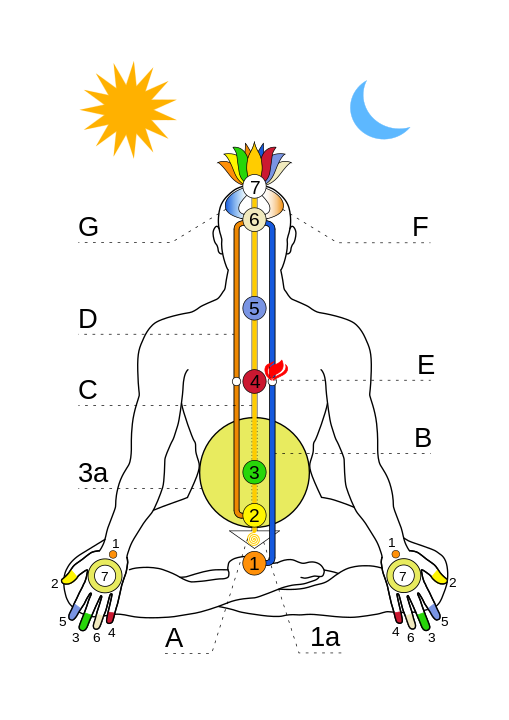
This page may contain affiliate links. Read my affiliate policy here.
Historical Roots
Kundalini Yoga has deep roots in ancient Indian traditions and is a technology of awareness. Yoga, derived from the Sanskrit word ‘yuj,’ signifies the profound union of the individual self (atman) with the universal or cosmic consciousness (Brahman). It is a spiritual practice and philosophy that aims to harmonize the mind, body, and spirit, facilitating a connection between the finite human self and the boundless realms of existence.
Kundalini Yoga was introduced to the West by Yogi Bhajan in the 1960s. While we honor the contributions he made to making these teachings accessible, it’s crucial to acknowledge recent allegations regarding Yogi Bhajan. At https://howtorelievestressnaturally.com/, we do not support or condone any form of abuse or misconduct. Kundalini Yoga is much bigger than any individual, and we are committed to the practice’s core principles of integrity, self-awareness, and personal transformation.

Kundalini Yoga, rooted in ancient traditions, stands as a testament to the enduring wisdom of yoga. Its origins reach back in time, with mentions of Kundalini practices found in ancient texts and even an Upanishad named ‘Yoga-kundalini,‘ emphasizing its deep connection to the spiritual heritage of yoga. Kundalini Yoga is based on the Tantric Yogic system utilizing the chakra system of subtle energy centers.
The subtle system of Sahaja Yoga. 1. The Muladhara Chakra. 1a. The Muladhara. 2. The Svadishthana Chakra. 3. The Nabhi Chakra. 3a. The Void. 4. The Anahata Chakra. 5. The Vishuddhi Chakra. 6. The Ajna Chakra. 7. The Sahasrara Chakra. A. Kundalini. B. Left channel (Ida nadi). C. Central channel (Sushumna nadi). D. Right channel (Pingala nadi). E. Spirit. F. Ego. G. Superego.
Image Credit: Alex-engraver, Public domain, via Wikimedia Commons
Full Spectrum Yoga: A Unique Path to Self-Discovery
Kundalini Yoga stands out as a comprehensive and unique path to self-discovery, mental clarity, and spiritual growth. Unlike many yoga styles that primarily focus on physical postures and exercises, Kundalini Yoga offers a complete and diverse range of yogic practices, making it a holistic journey for the mind, body, and spirit.
Diving Deeper Than Physical Asana

While physical postures are an integral part of Kundalini Yoga, they are just one piece of a multifaceted puzzle. What sets Kundalini Yoga apart is its unwavering commitment to exploring seven of the other limbs of Patanjali’s renowned 8-limb path.
This comprehensive approach transcends the confines of a typical gym class yoga style and delves into the essence of yoga philosophy.
Patlajali’s Eight Limbs of Yoga
To give you a clearer picture, Patanjali’s 8-limb path serves as a foundational framework for the practice of yoga. Kundalini Yoga integrates not only the physical aspect (asana) but also the other limbs, including:
- Yamas and Niyamas: Ethical and moral principles that guide personal conduct and self-discipline.
- Pranayama: Breath control techniques to regulate vital energy.
- Pratyahara: The withdrawal of senses from external distractions.
- Dharana: Focused concentration.
- Dhyana: Meditation practices that lead to a state of profound awareness.
- Samadhi: The ultimate state of blissful union with the divine.
By emphasizing these aspects of yoga, Kundalini Yoga becomes a transformative journey that goes beyond the physical, inviting practitioners to explore the depths of their consciousness and spirituality. It’s a unique path that may differ from what you’ve encountered in other yoga styles, offering a more profound and comprehensive experience.
Influence of C. G. Jung and Arthur Avalon
The practice of Kundalini Yoga also draws inspiration from the work of influential figures like C. G. Jung and Arthur Avalon (pseudonym of Sir John Woodroffe), who explored the profound aspects of the human psyche and the transformative potential within. The Kundalini Yoga series, expertly presented by Dr. Anne Taylor, artfully draws upon the profound insights of Carl Jung, making them more accessible to the Western mind. This fusion of Kundalini Yoga and Depth Psychology reveals substantial overlaps, particularly in their shared belief that a higher Self serves as the central organizing principle of the psyche. Jung’s exploration of Kundalini Yoga is documented in his work ‘Psychology and Kundalini Yoga,’ while Arthur Avalon’s ‘Serpent Power‘ delves into the timeless secrets of Tantric and Shakti traditions, offering a deeper understanding of the connections between consciousness and the ancient practice of Kundalini Yoga.
Swami Sivananda Radha
Swami Sivananda Radha, a renowned yogini, and author of Yoga for the West, made significant contributions to the understanding and propagation of Kundalini Yoga. She founded the Yasodhara Ashram in British Columbia and her teachings and practices have enriched the tradition and continue to inspire practitioners worldwide.

Raj Yoga Connection
Kundalini Yoga is often categorized as a form of Raj Yoga, a branch of yoga that places a significant emphasis on meditation and spiritual practices. Raj Yoga is a direct path to higher consciousness. This alignment with Raj Yoga highlights Kundalini Yoga’s primary focus on inner transformation and spiritual growth. At its core, Kundalini Yoga draws inspiration from the timeless wisdom encapsulated in the Yoga Sutras of Patanjali, a foundational text that provides profound insights into the philosophy and practices of yoga. Swami Vivekananda, a key figure in the introduction of yoga to the West, equated Raj Yoga with the Yoga Sutras of Patanjali. This association with the Yoga Sutras underscores Kundalini Yoga’s dedication to harnessing the transformative power of meditation and spiritual disciplines as a means to attain self-realization and transcendental awareness. (Source: https://en.wikipedia.org/wiki/R%C4%81ja_yoga).
Ready to Begin Your Kundalini Yoga Journey
Don’t miss the opportunity to embark on a transformative path toward well-being, inner peace, and self-discovery. Join our next upcoming Kundalini Yoga series and become part of a supportive community dedicated to personal growth and positive change. Reserve your spot now, and start experiencing the profound benefits of Kundalini Yoga.

Important Note: Addressing Concerns
At howtorelievestressnaturally.com, we prioritize transparency and integrity in our practice of Kundalini Yoga. We acknowledge recent allegations concerning Yogi Bhajan, the founder of Kundalini Yoga in the West, and categorically condemn any form of abuse or misconduct. Our commitment is to create a safe and nurturing environment for our students.
Challenges faced by spiritual leaders, like Yogi Bhajan, are not unique; this phenomenon is referred to as ‘the guru’s shadow,’ as discussed by Ken Wilbur in his insightful teachings. Many spiritual traditions have grappled with similar issues.
The Power of Kundalini Yoga
Kundalini Yoga’s efficacy and transformative potential derive from the profound teachings it draws from, including Patanjali’s Yoga Sutras. Our practice is rooted in these timeless principles, emphasizing self-awareness, mental clarity, and spiritual growth.
Throughout the years, countless students have experienced remarkable benefits through Kundalini Yoga. This stands as a testament to the practice’s inherent strength and the dedication of our community. We are steadfast in sharing this potent and effective path with you, recognizing that it transcends any individual’s actions.
Our mission is to empower you on your journey toward well-being, inner peace, and self-discovery through the transformative practice of Kundalini Yoga. We invite you to join us and embrace the positive changes it can bring to your life.
